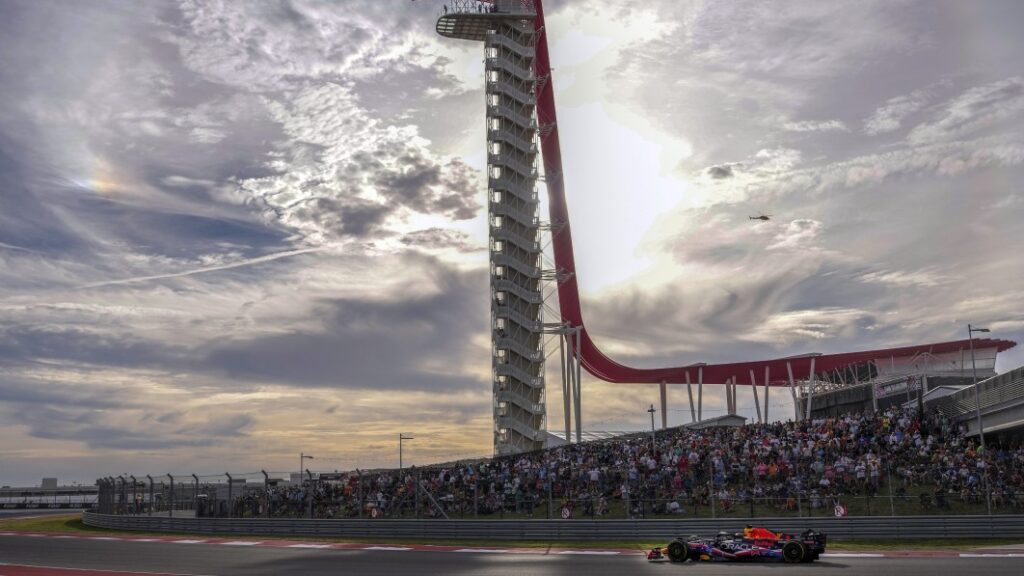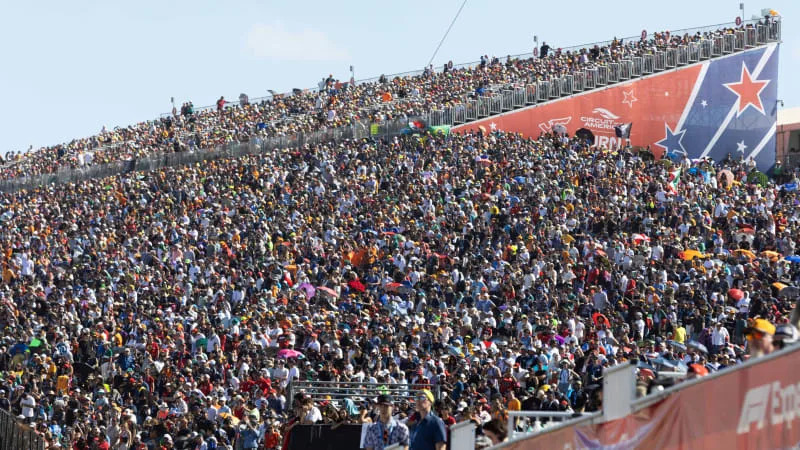With over 400,000 attending, how did the F1 U.S. Grand Prix get so popular?

Not long after Formula 1 started racing at Austin’s Circuit of The Americas, it looked like that race might’ve been following a similar pattern as past grands prix in the U.S. Start out with a bang, then slowly dwindle in popularity for any number of reasons before it was canceled entirely. Attendance for the 2012 opening race hit 265,000 before dropping to a low of just 224,000 in a rainy 2015 race. There being a race at all in 2023 and beyond was not a sure thing back then, but here we are. The USGP just posted another massive attendance figure of 432,000 and the race is currently slated to be run through 2026, securing its immediate future.
How did we get here? Well, the obvious answer is that the U.S. finally embraced Formula 1. The growth in the sport over the past few years inherently brings more butts into seats, and it’s to the point that COTA is getting over 400,000 into its complex over the course of the weekend. Massive musical acts, the tourist attraction that is Austin as a city, the timing of Netflix’s “Drive To Survive,” and of course, the allure of the race itself have all combined into a perfect storm to make the USGP one of the most popular races to go to on the calendar.
“So I don’t think you can talk about F1 these days without thinking about what Liberty Media did when they bought them and what ‘Drive To Survive’ has done for the sport,” Assistant Professor of Instruction at University of Texas’ McCombs School of Business, Donald Ruse tells us.
One of Professor Ruse’s courses at McCombs’ Business School is quite literally held in concert with the Circuit of The Americas, and while he attributes a good chunk of the race’s success to “Drive To Survive,” there’s more to it than that. Ruse, who is not a lifelong Texan but currently resides in the Austin area, points to Austin being a booming town of both tourism and business. It’s a place with a world-renowned food and music scene. It’s a college town. And it’s also a city that can truly facilitate the mass amounts of people coming in without it being overbearing for the city. Many famous and major Formula 1 circuits don’t have massive entertainment centers in the form of famous cities nearby, but Austin does, and it’s a huge advantage.
The drivers liking the facility, the atmosphere and the track itself helps, of course. And while many races have a certain amount of pomp and circumstance, drivers are really into this race. The grid dresses up in cowboy hats; drivers debut unique helmet designs created with a Texan theme and teams even have unique liveries done up for the cars themselves. When fans see the kind of excitement from drivers and teams, they respond. Every on-TV interview you see with a driver during USGP week manages to come around to how much the drivers both enjoy the track and the theater behind this race. Personalized gifts for the drivers are handed out, and this year they all got customized bolo ties. McLaren driver Lando Norris smirked after receiving his and jokingly said, “you know you’re the only track that does this stuff?”
“We have a world-class facility that’s become a driver favorite,” Ruse says. “We have a production that is more of a festival than just an auto race, and that really has been all the ingredients to make this a fan favorite … It’s a perfect built facility, and I think you get a lot of value for your money. Not only do you get to see a race but the entertainment that they put around this track is unbelievable.”
This year COTA had The Killers, Queen and Adam Lambert, but let’s not forget 2016 when organizers managed to get Taylor Swift to put on a concert over the Formula 1 weekend. That was a massive boost to the race’s popularity – if Swift did the same today, it’d almost certainly be cause for the USGP to break every attendance record in Formula 1 history.
All of these factors line up to give COTA the staying power that it’s had. Formula 1 has tried many different circuit locations over the years in the U.S., but only Watkins Glen from the 1960s into 1980 stuck and managed to continue being run for longer than the race in Austin has at this point. Ruse points to competing race series in the U.S. splintering American race fans and general dissatisfaction from either the locations or the tracks across history as reasons for previous USGPs coming up short.
Having just attended last year’s race at COTA, it’s abundantly clear why race fans have fallen for the track. You can move all around it to watch from various vantage points in general admission; the views from the grandstands and corners are fantastic, and the facilities everywhere you look are exactly what you’d expect from a top-tier racetrack the likes of which you might find in Europe. You get to sample from Texas food trucks, watch a race that is typically full of passing maneuvers thanks to the two long straights and see F1 cars pushed to their limits around both fast and slow corners. And even if racing isn’t your number one priority, the entertainment level of activities to do around the track and in the city don’t disappoint.

As more Formula 1 races are added to the calendar, though, COTA’s supremacy is certainly a question. That’s all the more clear as attendance took a tiny dip this year versus the last. Demand for Miami and Las Vegas tickets were both extremely high this year, so it’s up to organizers like Bobby Epstein and Formula 1 to keep the excitement high as folks in America have even more options to attend races. Even if the numbers were ever so slightly lower than last year, the efforts seem to be working so far, because 432,000 people is still more than almost every other Formula 1 race weekend this year. Despite the Drivers’ and Constructors’ Championships being entirely locked up, the fans are still here and still packing those seats.
Formula 1 has come a long way in the U.S. since the race started at COTA, and while nobody’s talking about it in the same breath as legendary tracks like Silverstone and Spa-Francorchamps, it’s telling that fan interest meets or even rivals attendance at those tracks. Plus, COTA attracts more than just U.S. Formula 1 fans. Scan about the crowd, and you’ll find countless folks that made the trip from Europe or South America, both regions that have their own, albeit differing amounts, of Formula 1 race weekends.
“I had friends who came over from France,” Ruse says. “They’re diehard, you know, lifelong Formula 1 fans and they had been to all the circuits and when they came here, they could not believe the experience that was provided by COTA and the USGP and Texas hospitality … we walked into the gate and, you know, you have a Texas Hello, and he looked at me and he said, ‘That would never happen in France.’”
America loves its live sports, and now that it’s latched onto Formula 1, it has us even more excited to see how America’s most popular F1 race grows with it and to see how long Austin can hang onto its rabid popularity with fans.

